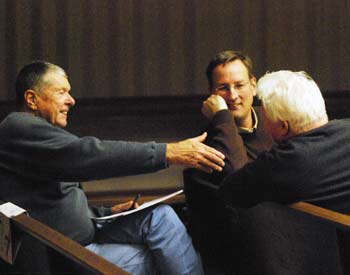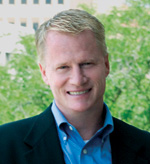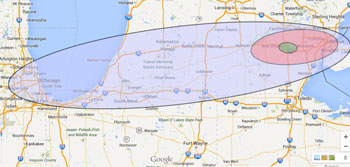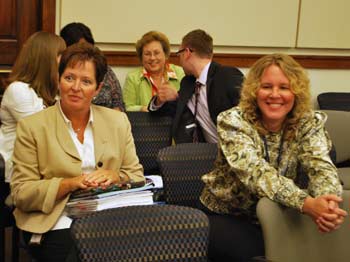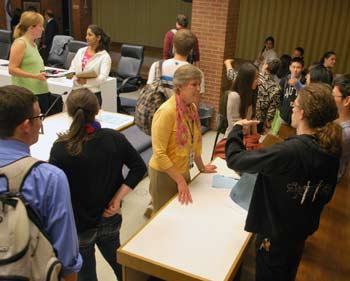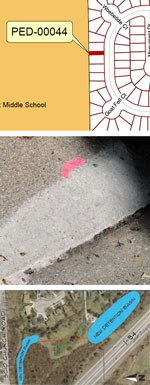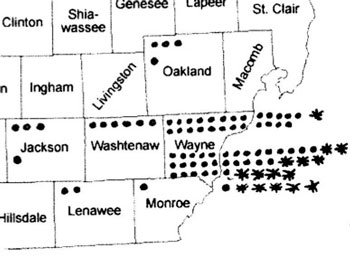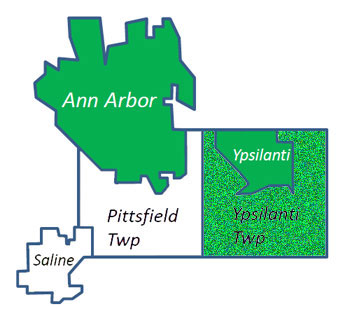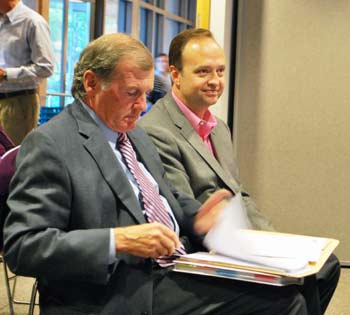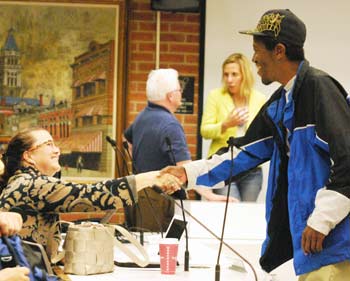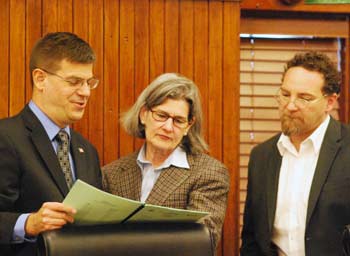Library Wary of Downtown Park Proposal
Ann Arbor District Library board meeting (Oct. 21, 2013): Expressing concerns over the possible addition of a downtown park on the city-owned Library Lot site – adjacent to the downtown library – AADL trustees discussed but took no formal action related to a recent recommendation of the Ann Arbor park advisory commission.

View looking north toward the city-owned Library Lot, taken from the fourth floor of the Ann Arbor District Library building. (Photos by the writer.)
The idea for a new park was among several recommendations approved by the commission at its Oct. 15, 2013 meeting, to be forwarded to the city council for consideration. The AADL was specifically mentioned in the Library Lot recommendation: “In order to adequately address issues of safety and security, the Ann Arbor District Library must also be strongly represented in the planning process.”
AADL director Josie Parker stressed that neither she nor board president Prue Rosenthal had indicated that the library is in any way capable of advising the city regarding security and safety of a park. They had attended a meeting of the downtown park subcommittee, she said, and had related the library’s experiences regarding a range of security issues at the downtown building. Parker reported that so far in 2013, the library has made police requests to its downtown building on average every 3.5 days.
Trustees generally expressed caution and noted that many questions remained about whether a downtown park at that location would be viable, without adequate oversight and additional development. Parker planned to relay the board’s concerns to the park advisory commission.
Another major item of discussion at the Oct. 21 meeting related to Pittsfield Township’s proposed State Street corridor improvement authority (CIA). Craig Lyon, director of utilities and municipal services for Pittsfield Township, and Dick Carlisle of Carlisle Wortman Associates were on hand to answer questions, as was CIA board member Claudia Kretschmer of Gym America. Trustees asked a range of questions, covering other financing options, the process for receiving federal funds, and the procedure for opting out of this new tax increment financing (TIF) authority.
If the board decides that AADL will opt out, a resolution would need to be passed. Taxing entities have a 60-day period in which to make an opt-out decision. That period began with an Oct. 9 public hearing held by the Pittsfield Township board, and will end in early December. The only AADL board meeting currently scheduled before then is on Nov. 11.
In its one main action item on Oct. 21, the board authorized a $40,000 adjustment to AADL’s 2013-14 budget to cover costs of repairs and testing of the downtown library roof. The adjustment transfers $40,000 from the library’s fund balance to the repair and maintenance line item. According to the most recent financial report, the library had a fund balance of $8.03 million as of Sept. 30, 2013.
During her director’s report, Parker highlighted some of the niche services that the library provides – such as hosting a Minecraft server and a recent Oculus Rift Hackathon. She said she wanted the board to think about the things that go beyond just lending books – services that are important to some but completely irrelevant to others. “The combination of it all is what makes the Ann Arbor District Library the amazing library system that we all know it is,” Parker said. “It’s the sum of all these parts, not one aspect or service.”
During committee reports, Nancy Kaplan noted that the communications committee hopes to receive a report later this month from Allerton-Hill Consulting to review. The consultants were hired earlier this year to conduct a communications audit for the library – a move that’s been criticized by some residents who believe the work is positioning AADL for another bond proposal to build a new downtown library.
For the first time in several months, no one spoke during public commentary at the board meeting. [Full Story]






